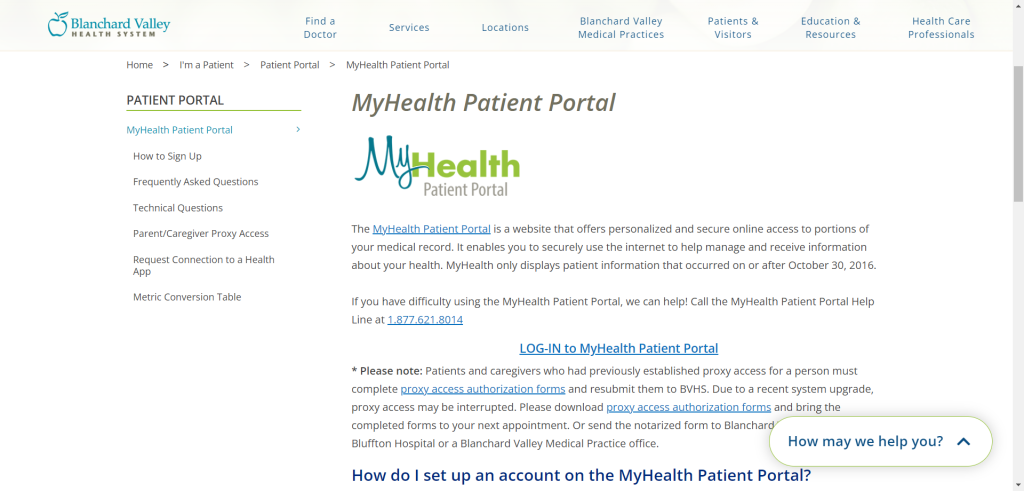In today’s digital age, having access to your personal health information at your fingertips can be a game-changer. That’s where patient portals like MyHealth come in – a secure online platform that allows you to take an active role in managing your healthcare.
What Is the MyHealth Patient Portal?
The MyHealth patient portal is a user-friendly web-based tool that serves as a bridge between you and your healthcare providers. It’s a centralized hub where you can access your medical records, communicate with your care team, request appointments and prescription refills, and even pay your bills – all from the comfort of your home or on-the-go using your smartphone or tablet.
Key Features and Benefits
Comprehensive Medical Records Access: One of the most significant advantages of the MyHealth portal is the ability to view your complete medical history, including test results, diagnoses, medications, immunizations, and allergies. Having this information readily available can help you make more informed decisions about your health and ensure you’re providing accurate details to new healthcare providers.

Secure Messaging with Your Care Team: The portal’s secure messaging system allows you to communicate directly with your doctors, nurses, and other healthcare professionals. Whether you need to clarify instructions, ask follow-up questions, or report any changes in your condition, you can do so conveniently without having to wait for an appointment or play phone tag.
Appointment Management: Scheduling and managing appointments has never been easier. Through the MyHealth portal, you can view your upcoming appointments, request new ones, and even receive reminders to help you stay on track with your healthcare needs.
Prescription Refill Requests: No more hassle of calling the pharmacy or visiting the doctor’s office for routine prescription refills. With a few clicks, you can request refills directly through the portal, ensuring you never run out of your essential medications.
Online Bill Pay Streamline: your healthcare finances by accessing and paying your medical bills online. The portal provides a clear breakdown of your charges, making it easier to understand and manage your healthcare expenses.
Health Trackers and Educational Resources: Many patient portals, including MyHealth, offer additional tools to help you take an active role in your well-being. These may include health trackers for monitoring conditions like diabetes or blood pressure, as well as educational resources on various health topics to help you stay informed.
Getting Started with the MyHealth Patient Portal
Using the MyHealth patient portal is straightforward and secure. Here’s how to get started:
Sign Up and Create Your Account: Your healthcare provider will typically provide you with instructions on how to sign up for the portal. This may involve providing your email address, creating a unique username and password, and verifying your identity.
Log In and Explore: Once your account is set up, simply log in using your credentials, and you’ll be directed to your personalized portal dashboard. Take some time to navigate through the various sections and familiarize yourself with the available features.
Update Your Profile: Ensure your personal and contact information is accurate by updating your profile. This will help your healthcare team communicate with you effectively and ensure you receive important notifications and reminders.
Connect with Your Providers: If you haven’t already, link your account to your healthcare providers. This will give you access to your medical records, appointment schedules, and the ability to communicate with your care team through the portal.
Set Up Notifications and Reminders: Customize your portal settings to receive notifications and reminders for upcoming appointments, prescription refills, or when new test results are available. This can help you stay on top of your healthcare needs and never miss important updates.
Privacy and Security Considerations
While the convenience of patient portals is undeniable, it’s essential to understand and address potential privacy and security concerns. MyHealth and other reputable patient portals employ robust security measures, such as encryption and multi-factor authentication, to protect your personal health information (PHI) from unauthorized access.
- Use a strong, unique password and enable two-factor authentication if available.
- Avoid accessing your portal on public or shared computers or networks.
- Log out of the portal after each session, especially on shared devices.
- Never share your login credentials with anyone, including family members or healthcare providers.
- Be cautious of phishing attempts or suspicious emails claiming to be from your healthcare provider or the portal.
By taking these precautions and being vigilant about protecting your personal information, you can enjoy the benefits of the MyHealth patient portal while minimizing potential risks.
Embracing Digital Healthcare Management
The MyHealth patient portal represents a significant step forward in empowering patients to take an active role in their healthcare journey. By leveraging this powerful tool, you can streamline communication with your care team, access your medical records, and manage appointments and prescriptions with ease.
As technology continues to evolve, patient portals like MyHealth will likely become even more integrated into our healthcare experience, offering new features and capabilities to enhance our overall well-being. Embrace this digital transformation and make the most of the resources at your fingertips to take charge of your health.